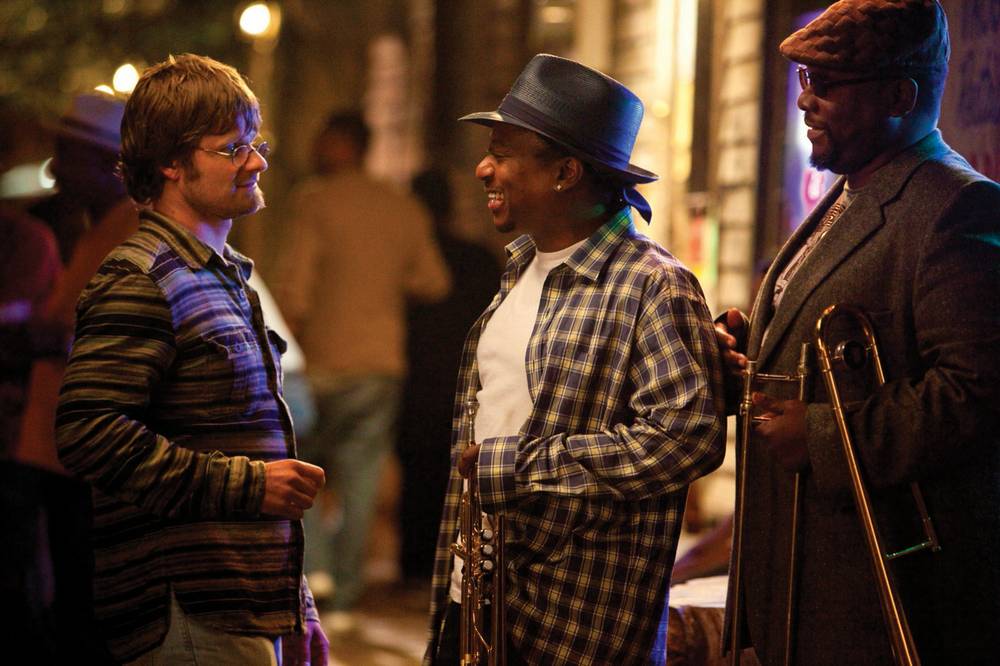The Details
- Treme

David Simon’s HBO series The Wire has been so thoroughly and universally acclaimed that it’s sort of a surprise the guy hasn’t been canonized yet. The five seasons of The Wire, which aired from 2002-2008, told a rich, complex story about crime and corruption in Baltimore, with novelistic structure, nuanced characters and an unsentimental take on the often futile battle between cops and criminals.
But while Simon could probably coast on The Wire’s reputation forever, he’s moved on: After his disappointing 2008 Iraq-war miniseries Generation Kill, Simon is back chronicling the life of a decaying American city with Treme (HBO, Sundays, 10 p.m.), co-created with Wire writer Eric Overmyer. Treme takes place in New Orleans in 2005, three months after Hurricane Katrina (the show’s title refers to a New Orleans neighborhood). Unlike The Wire’s battle of inches between the police and organized crime, Treme’s main focus is a little more genteel, and even upbeat: Most of the main characters are musicians trying to revive the city’s cultural life after the disastrous storm.
Not that Simon has lost his trademark jaundiced eye. New Orleans is a mess, of course, with whole sections of the city decimated and empty, and even those who were spared the storm’s worst effects are unsure of how to pick up the pieces. U.S. soldiers still roam the streets, and the local cops are quick to hassle ordinary citizens. In addition to the range of musicians, Simon and Overmyer offer up a lawyer, a college professor, a bar owner and a chef as main characters, all of whom are essential to the unique New Orleans makeup. They’re not running season-long sting operations to take down huge criminal networks, but their troubles with getting their electricity turned back on and preserving native culture are given just as much weight.
Simon and Overmyer have populated the cast of Treme with a couple of Wire alums (Wendell Pierce and Clarke Peters), a bunch of veteran character actors (Khandi Alexander, Steve Zahn, John Goodman, Melissa Leo, Kim Dickens) and a few newcomers, crafting a strong ensemble to inhabit these down-to-earth characters and make Treme a place you want to keep visiting. That’s key, since unlike The Wire—which sometimes seemed like it was nothing but plot—Treme isn’t plot-driven, as the characters merely go about their daily lives. Other than Alexander’s bar owner searching for her missing brother, the first three episodes have nothing in the way of urgent plot developments, and that sometimes makes the show feel like it lacks purpose.
But Simon is as adept as ever at painting a diverse portrait of a city, and structurally Treme has plenty in common with The Wire, with multiple overlapping narrative threads in each episode, and characters who connect and then part at different times. Simon’s political agenda was an important (and well-integrated) part of The Wire, and threatened to overtake Generation Kill. Here it’s embodied mostly in Goodman’s college-professor character, who goes on a rant in the first episode that’s like a recitation of a blog post, and at times other characters deliver big chunks of exposition about New Orleans history. But overall the show does such a good job of making the city seem vibrant and exciting enough that you want to learn more about it.
That’s the biggest difference: The Wire made Baltimore seem like a place no one would ever want to go, and it used that as a microcosm of the broken American legal system. But despite the governmental neglect and the property destruction, the New Orleans of Treme is inviting and even inspiring. After so many years as TV’s prime chronicler of urban despair, David Simon just may have become an optimist.







Previous Discussion: